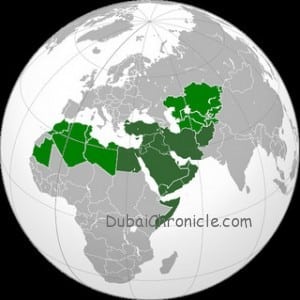
Back in January we were cautiously optimistic about the global economy, now we are cautious.
Given that the global economy is basically slowing down, the situation in MENA – the Middle East and North Africa – is even more troubling, because in addition to a slowing global economy we are faced with low oil prices, conflict and civil wars in many countries as well as terrorist attacks.
Overall, economic growth in the MENA region as a whole is going to be 2.8% for the entire 2015, according to the World Bank.
But it is important to keep in mind that for the last 3 years, the region has failed to exceed 3% growth.
And the Gulf countries are now – they used to be in surplus, but now their fiscal accounts are in deficit of the order of almost 10% of GDP – is the combined deficit of the GCC. And in dollar terms, that’s US$136 billion dollars.
Now the other oil exporters unfortunately are in conflict. You have Iraq, Syria, Yemen and Libya.
The one exception of that is Iran – which is not in conflict as such – and we’ll probably be seeing an uptick in growth as the lifting of sanctions takes effect and Iran resumes oil exports.
Now with low oil prices you would expect that the oil importers would be benefitting. But in fact every one of them has its own problems. For instance, there were two terrorist attacks in Tunisia, and that has led to a 50% decline in tourist arrivals for the year in Tunisia.
Morocco is the one country whose growth rate is in the 4 to 5% range – and that’s good news – but Morocco is also highly dependent on the weather for its economy, because of the agriculture.
The economic prospects for MENA in 2016 are not good: The conflicts don’t seem to be abating; oil prices are likely to stay low; and in this situation, many of the economic reforms that the countries need to do in order to attract investment and stimulate growth are not happening – it is very difficult to get that. So I would say the urgency to act is even higher.



































